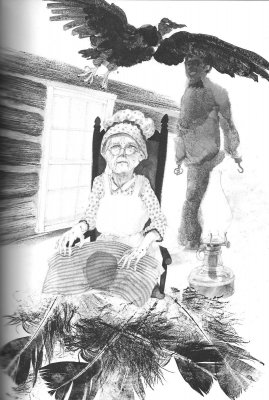- Joined
- Aug 18, 2002
- Messages
- 19,398
Venezuelans see collapse of religious statue as an omen of country's political future
By Associated Press
Tuesday, June 8, 2004
CARACAS, Venezuela - As one of Venezuela's most venerated religious figures, Maria Lionza has inspired hope and granted wishes to devotees for more than 200 years.
So Venezuelans were shocked when a prominent 53-year-old statue of the mythical goddess split apart at the waist on Sunday and fell backward to face the heavens.
Those active in the cult of Maria Lionza, a mix of African spiritualism, Indian and Catholic beliefs, interpreted the incident as an omen that Venezuela's political crisis is nearing conclusion.
``It's all coming to an end. The abuses against us and this country are ending. We are going to see liberty, truth,'' said Tamara Escalona, a faith healer who also happens to be a critic of President Hugo Chavez.
The fact that the statue fell backward to face the sky means Maria Lionza is asking God for assistance to resolve the crisis, she said.
However, the pro-Chavez newspaper Vea accused opposition ``vandals'' of toppling the sacred statue during a weekend march.
News of the event interrupted coverage of demonstrations for and against Chavez, the leftist firebrand whose tumultuous five-and-a-half year presidency has deeply polarized the country.
His supporters, the poor masses, say he is the first leader to try to help them but his foes blame him for wrecking the oil-rich nation.
The opposition has been trying for more than two years to get a referendum on his rule. Just last week electoral authorities said his foes had collected enough signatures to mount the recall vote.
Crafted by sculptor Alejandro Colina, the voluptuous statue was placed at its current location in Caracas in 1953 by the dictator Gen. Marcos Perez Jimenez. A Maria Lionza devotee, Perez Jimenez hoped to legitimize his regime by putting the statue on the divider of a new highway.
Every day, thousands of motorists pass what looks like a naked, muscular Indian woman sitting astride a wild tapir, a snake coiled at its feet.
The 20-foot-tall statue is the scene of split-second pilgrimages through four lanes of traffic. Scrambling believers clutch offerings of flowers, candles and money.
Each year, hundreds of thousands trek to the Sorte Mountains, 180 miles west of Caracas, to visit Maria Lionza's reputed home. There, they perform religious ceremonies, ask her help, and thank her for answering prayers.
According to legend, Maria Lionza had unusual green eyes, fair skin and supernatural powers. Some say she was the daughter of an Indian chief. Others believe she was born to an Indian princess and Spanish conquistador, giving birth to the mestizo race.
One version says she was attacked by an anaconda guarding a lagoon.
``While God punished the snake with death, the maiden herself became the guardian of the lagoon and later became the protector of nature in this area of (the state of) Yaracuy,'' wrote anthropologist Angelina Pollak-Eltz.
Another version says she jumped to her death at a waterfall to avoid enslavement by Spanish invaders who had killed her family.
The statue's collapse generated more hyperbole in this politicized nation. For months, the pro-Chavez Greater Caracas government of Freddy Bernal has been trying to move the statue to restore it. The statue's owner, the Central University of Venezuela, insisted it should stay where it is.
The cult of Maria Lionza won international renown after Panamanian salsa singer Ruben Blades wrote a song about her in the 1970s.
Escalona and many others said it wasn't coincidence that the statue broke just as the recall campaign got underway.
``Yesterday was an awful day for us. But we are going to see the light,'' Escalona said.
http://news.bostonherald.com/international/view.bg?articleid=31070



